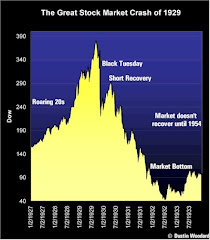In the NY Post there is an article about the difference between retirees in the public sector and those in the private sector. It highlights some of the rhetoric used to identify the difference. Defenders of public employee pension systems often make the case that pension benefits are not all that generous. The outrageous cases you see on the news — Long Island police retiring in their 40s with pensions in excess of base pay, administrators “retiring” with six-figure pensions and then going back to work with another government agency, one ex-FDNY firefighter running marathons on his $86,000 “disability” pension — are the exceptions, they say.
The data, however, tells a different story. According to the Census Bureau, the average New York retiree receiving a corporate or union pension — a retiree from the private sector — was receiving an annual benefit of $13,100 in 2009. For state and local government retirees, that figure was more than twice as high: $27,600. And that average figure includes retirees who were part-time workers or only spent part of their careers in government; full-career retirees often do far better.
The Average Pension is not the Average Pension The public sector unions always use the example of the "average pension" when they try and show that pensions are not really too high. One key component is missed in the average pension approach. It includes retirees who have been retired for as long as 30 years.
An example are the pensions of federal public servants in Canada. It is commonly reported that the average pension is $ 24,506 per year. What is not pointed out that last year the new average pension was $39,312. This is the average pension of someone retiring last year. Add a full CPP pension onto the average pension and you have a retirement for a newly retired federal civil servant of over $ 50,000 per year. Much higher than the average working Canadian wage of $44,000. Add in the 70% increase that a pensioner has in disposable income and heck, it's like they never retired at all. Just they do not have to go to the office any more!
Just how much is that pension worth?
Pension Bomb offers a quick pension calculator. In Canada most pensions would be the same as the after 1/1/2010 pension example.
Still Not Enough?
Like many city employees, former pension administrator Lawrence Grissom signed up for a great deal starting in 1999 — he used $116,000 to add five years to his city service record without having to work those extra years.
That boosted his pension by at least $24,000 a year for life.
Unlike any other city employee, however, his purchased service credits didn’t actually cost him anything. Taxpayers picked up the tab.
Now a 68-year-old retiree living in Colorado, Grissom is expected to collect an additional $456,000 in retirement because of the deal if he lives until age 82, the average life span for men.
Grissom’s pension is $118,000 a year, based on the 18 years he worked and the five years he purchased under his special deal. He retired in April 2006 at 63.
Before you get too excited... I know I can hear you already... "but Bill this is an example from California how can it be relevant to us?" sorry but it happens here too.
It is a common public sector pension benefit called the pension buy-back.
Ottawa Example
At the start of the year the the new Auditor of the City of Ottawa had a special provisions written into his contract that gave him a $100,000 signing bonus. This bonus was used to buy-back a pension that he had with another level of government.
The move was severely criticized especially as it came from someone who had the job of protecting taxpayers interests. I blogged about it in Obscene taxpayer and pension abuse in Ottawa
For example, in 2009, Nicole takes a leave of absence from her full-time teaching job to travel around the world. Her annual rate of pay immediately prior to her absence is $60,000. Here’s what it will cost Nicole to buy back the leave: $60,000 x 12.0% (contribution rate for 2009) = $7,200 + interest charges
We use the standard interest rates in effect from the end of your leave until your buyback is completed. For example, interest rates were 2.78% in 2009 and 1.90% in 2010. If your leave spans more than one school year, we also apply an escalation factor to your salary to account for year-over-year changes in employment information.
So in this example, a contribution of $7,200 would buy one year's pension worth $42,000. Also it will give an extra year of service boost to her total pension worth about 2% of her income. It will be for the rest of her life worth about another $36,000 over the next 30 years. It also allows her to retire one year earlier that her total working credits would allow.
How much pension buy-back can I sell you?
Bill Tufts
Fair Pensions For All




Based on the fact you used $42000 as her pension, you have assumed she works for 35 years times 2% per year to get that pension. What you failed to say was that the only time she actually collects this full pension from the Plan is if she retires early because as soon as Nicole starts collecting her CPP at age 65, her monthly pension drops by about that same amount.If you were such an 'expert' on pensions, you would know this. Also, you fail to mention that the $7200 she pays to buy back that year will get invested and earns money for the Plan. Please present a more accurate picture next time. And just for the record, I am not a teacher.
ReplyDelete